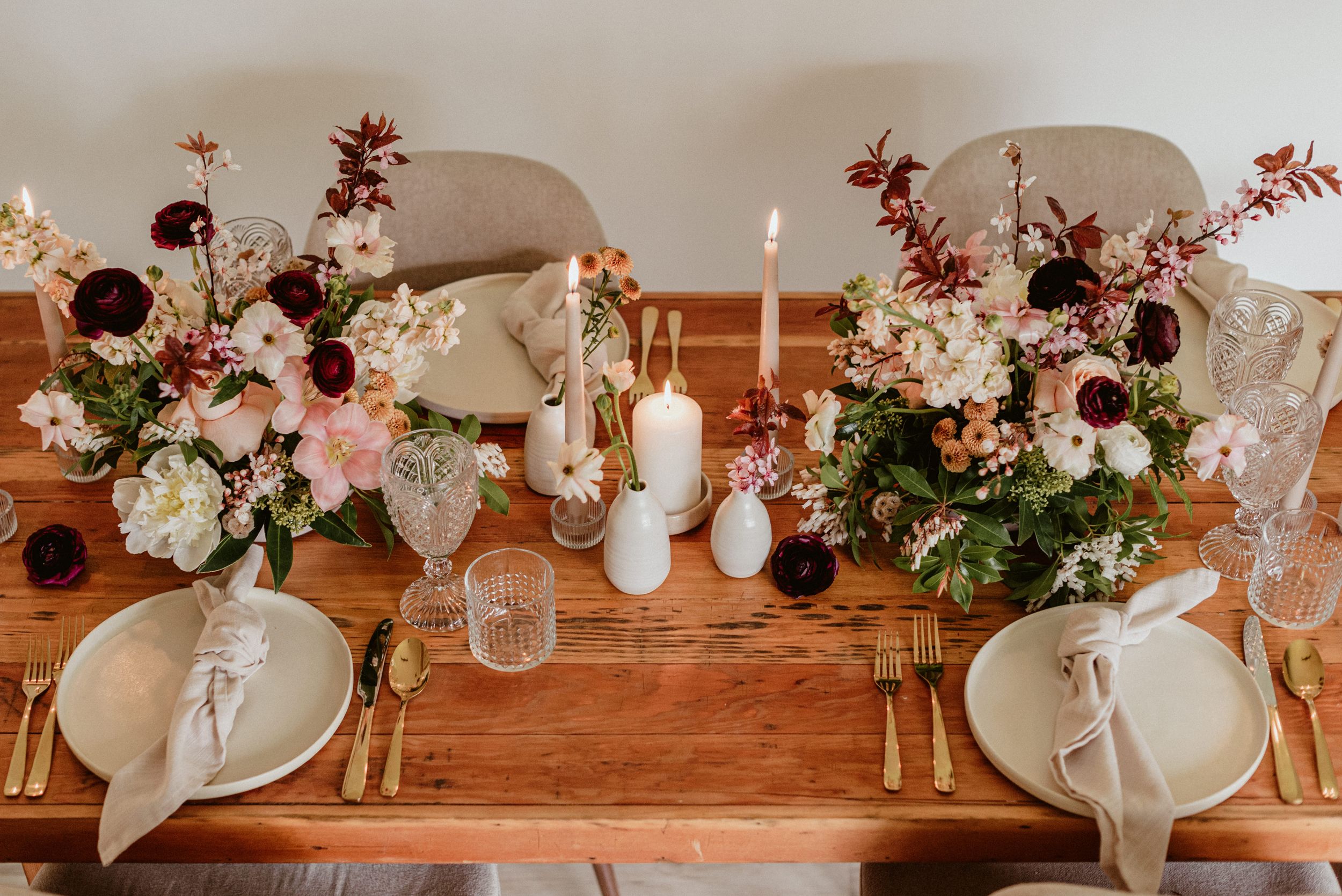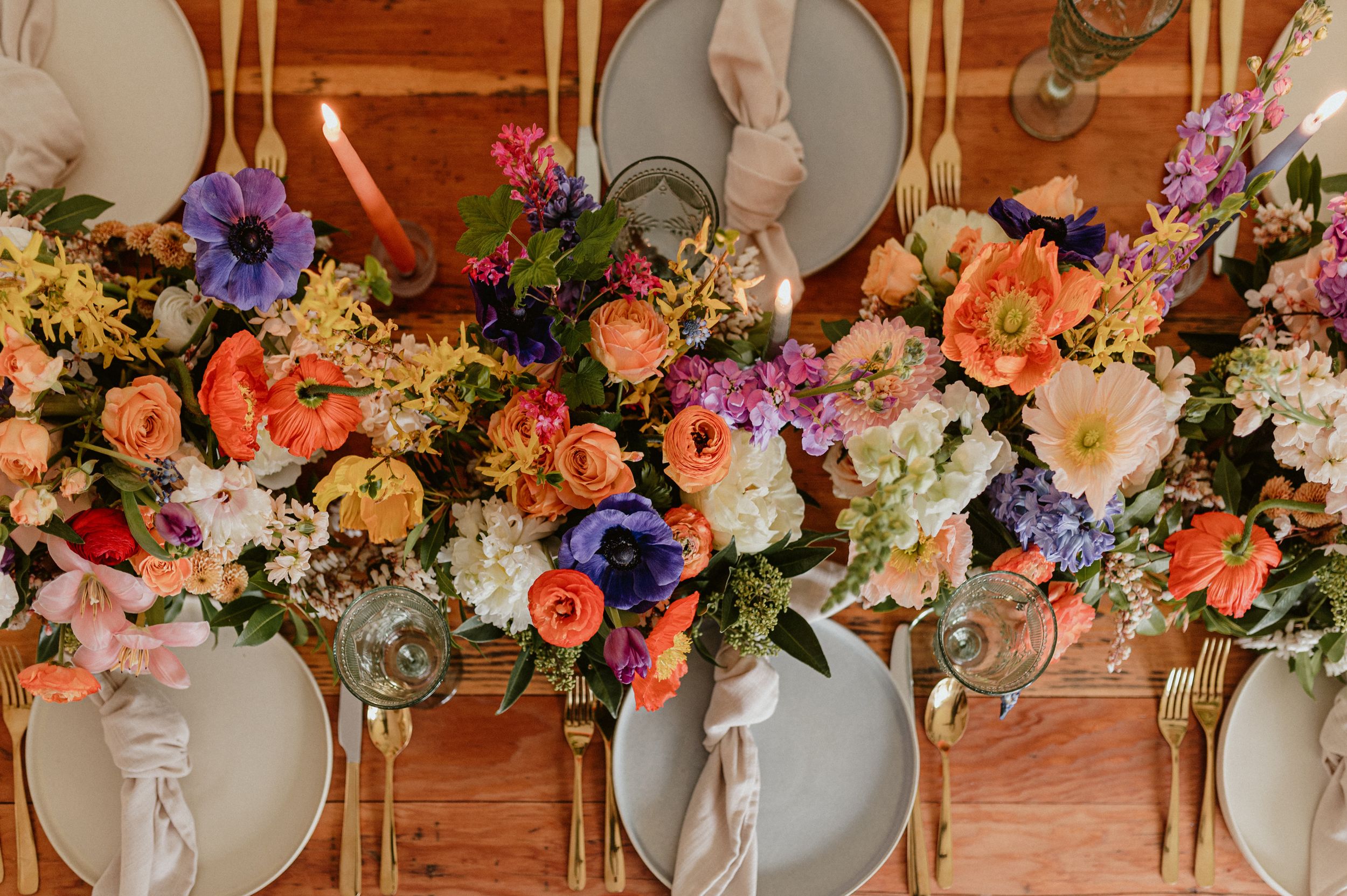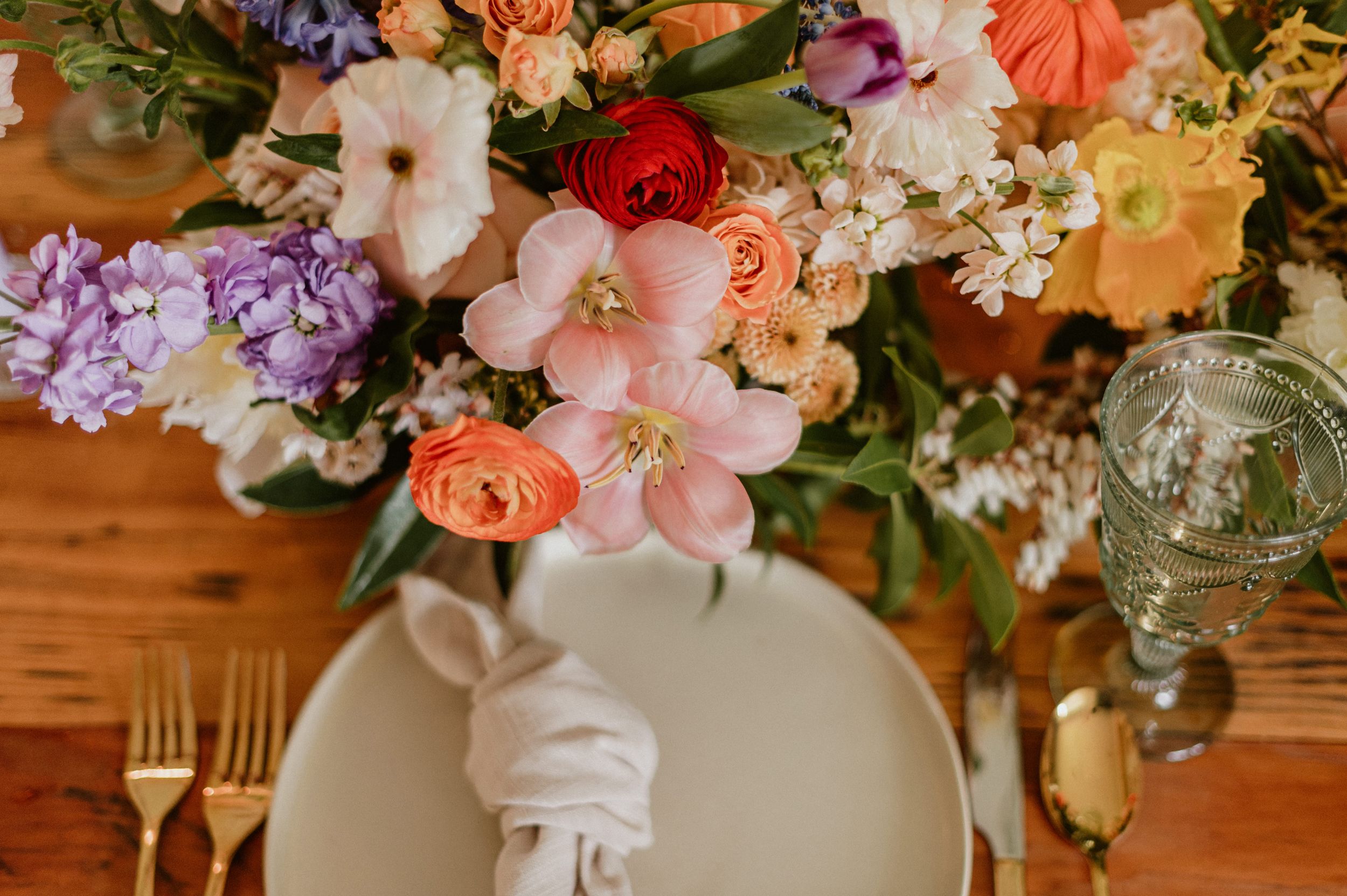The Colours of Spring
In anticipation of spring flowers, the table of my studio is bare, snips have been cleaned and sharpened, vessels have been scrubbed—and every week I look eagerly at tree branches and garden beds in search of buds and green shoots getting ready to burst into colour. Soon the air will smell like rain and grass and compost and cherry blossoms as the gardens wake up for the spring and flowers bless us with their fleeting presence again.
Spring is the time of year I find table florals to be the most impactful. After a long winter of grey skies and bare trees, seeing the abundance of spring in lively flowers is a treat for the senses. Creating a floral arrangement for your table or to give as a gift provides the opportunity to connect to the season of growth and practice creativity, playfulness and intentionality. With Mother’s Day approaching and an entire season of blooming flowers ahead, now is the perfect time to try your hand at arranging flowers to bring beauty and life to your table.
Preparation
To prepare your flowers for arranging, strip the stems of most of the foliage or leaves, leaving none beneath the rim of the vessel. Trim the flowers at a 45-degree angle to maximize surface area for water uptake. In regards to longevity for your flowers, clean and sharp snips are a must—dirty or dull shears will clog and damage the flower’s ability to take up water and cause it to wilt faster. The easiest four things to guarantee long life for your flowers are:
1) to purchase local, farm-fresh flowers,
2) only cover the bottom one to two inches of the stems with water to prevent early decay,
3) change the water daily with cool, fresh tap water, and
4) trim the stems half an inch every two to three days.
In preparation for arranging, I like to place my flowers on my working surface in groups based on type or flower formula shape so that I can select easily while assembling.

Arrangements
Every floral arrangement to catch your eye has likely contained some version of the following flower “formula”:
Feature: showy, larger blooms like tulips, ranunculus, peonies, allium and anemones.
Secondary: slightly smaller in size, and often add some colour contrast or gradient effects to complement the feature—geum, columbine and smaller narcissus varieties.
Airy: delicate stems that move in the breeze for a dainty look, like forget-me-nots. Admittedly, these flowers are difficult to come by in spring, so often flowering branches are used for both their dainty blooms and their spire shape.
Spire: provide upward movement and are a taller, skinnier bloom, like flowering branches, lupines and various foliage in early spring
Texture: found in any of the above categories as spring flowers are known for layers of ruffly petals or funky fringed edges. If working with smoother flowers, texture can be added by ensuring a variety of depth in the blooms—have a spire flower poke out of the bouquet in one place, and bury the secondary flowers just below the features.
Each arranger’s preference will differ, of course—beauty is in the eye of the arranger.
Find a vessel that will work for your table and scrunch up some chicken wire in the bottom of the vessel to serve as a stabilizer for the stems. Vessels with a wider opening like a compote, shallow bowl or even a rustic pail will allow for larger and more luxurious designs, while a vintage glass milk bottle, mason jar or jug will work for arrangements that have an effortless bouquet look. Long tables are best suited to a specially crafted, abundant, east-west arrangement, while a party table loaded with food and stemware may be best suited to bud vases. If you have one on hand, a lazy Susan can be helpful for ease of turning while arranging.
Use the flower formula by first adding foliage and texture to create a base shape for your arrangement. Once added, work from the base up to place some secondary stems, then feature flowers, then airy filler blooms. Work with the shapes and curves of each flower, embracing the natural beauty of each stem. The nodding heads of columbines can add a draping feature, while cherry blossom branches will add height. Specialty fringed or parrot tulips are delightful for texture, and periwinkle blue forget-me-nots are perfect as an airy filler.

Bud vases
If you prefer a minimalistic tablescapes or you are looking for an economical option, bud vases are a wonderful option that look best on longer tables. A springy wildflower look can be achieved by continuing to use the flower formula spread across different bud vases, using fewer blooms overall yet still including a variety of flowers, heights, and shapes for visual interest. The key to bud vases is a very narrow opening so that flowers stay nearly upright in the vase. I love the bud vases from Cheryl at Pottery for Peace, a local Campbell River potter whose vases are available at Bough & Antler Northwest Goods in Willow Point.
If you are someone for whom colour palette design is difficult, a wonderful way to assemble bud vases is to purchase a bouquet from a local farmer and disassemble the bouquet into your bud vases. Here in the Campbell River and Comox Valley area, the following growers offer spring and summer flower subscriptions and/or have farm stands with a variety of offerings for delivery or pickup: Hazel Bloom Farm, Wild Bee Florals, Coastal Island Farm, Blue Cottage Flower Co., Dirty Girl Flowers, Homestead Petals, Moon Petal Farm, and Dirtco Flowers.
Happy arranging, and may the abundance of spring flowers bring life to your homes and hearts.
Photos by Earth + Eve Photography





